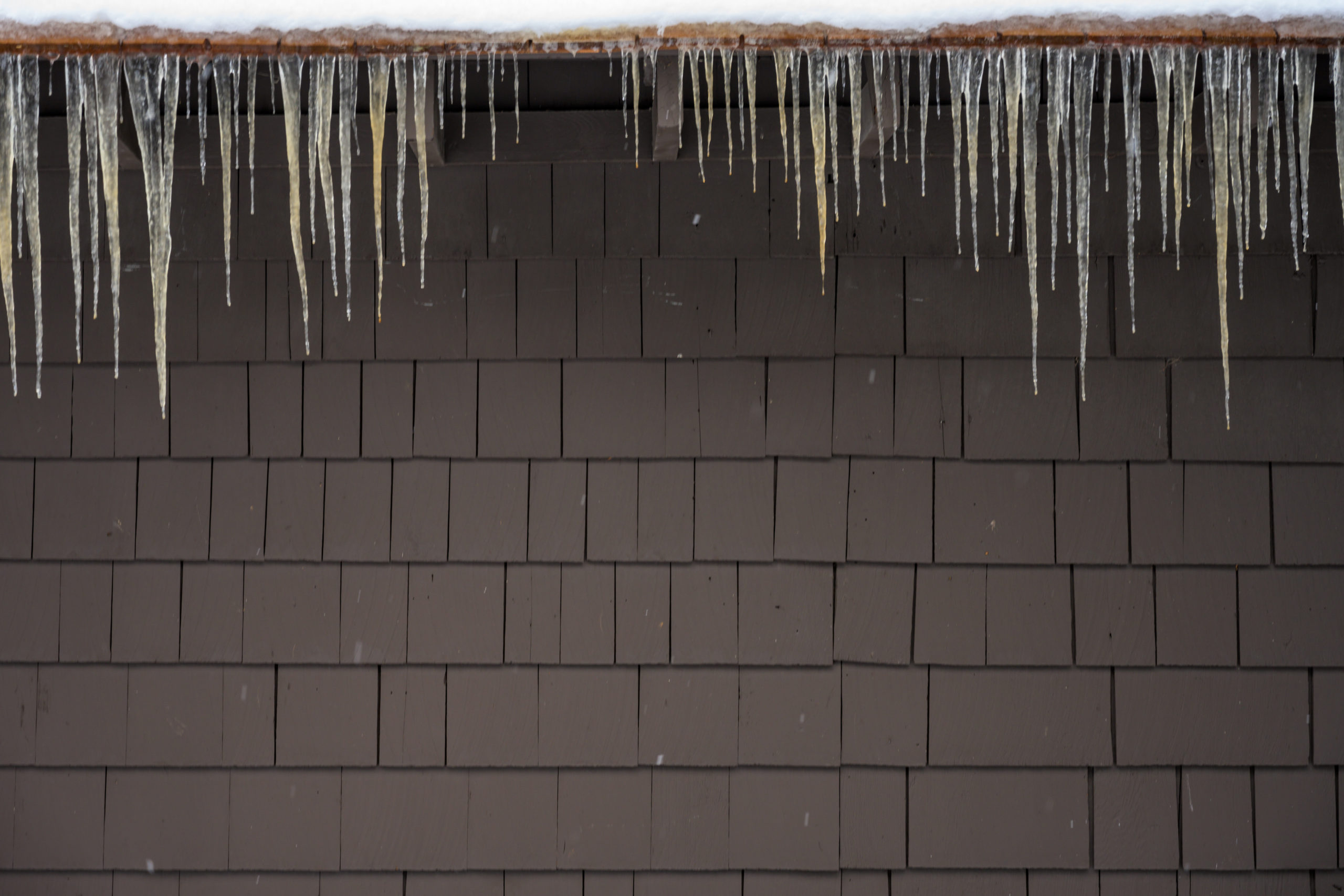Ice dams can occur when just enough heat escapes from your attic to melt the snow on the roof. The melted snow will then freeze when it reaches the edge of your roof (the eaves), creating a dam. The rest of the water will then back up onto and under the roofing materials, which allows it to get inside your home. Once inside your home the water can ruin your insulation, ceiling, wood framing, drywall, and even flooring. Preventing ice dams from forming on your roof can save you thousands of dollars in home repairs. To get started you will need to be aware of the signs.
HOW TO SPOT ICE DAMS:
While most ice dams will develop on the edge of your roof, they can also form in other locations. This is dependent on the slope, orientation, and style of your roof. You will want to keep a close eye on the following:
- The icicles around the exterior of your house: While these can be pretty to look at, icicles can actually be a precursor to ice dams. Icicles are formed in a similar fashion as ice dams. The snow melts off the roof and then refreezes at the eaves. Now the bigger the icicles, the bigger the ice dam. Also depending on the location and size of the icicle, they can pose a danger if they fall off. Whenever possible, you will want to remove any icicles from the exterior of your home. When removing you will want to make sure you are not to standing directly underneath them. If you cannot safely reach the icicles from the ground, you might wand to consider hiring a contractor to assist in the removal.
- Check for water stains or moisture: It is very important to check your attic and/or along the ceiling of exterior walls of your house for water stains and moisture. Having water stains or humidity can be an indication that an ice dam has formed and water has penetrated your roof membrane.
HOW TO GET RID OF ICE DAMS
If you do decide to break off the ice yourself then you will want to do it in small chunks by using a blunt object, like the head of a hammer. Your house is already under a lot stress because of the ice and you don’t want to risk putting a hole in your roof.
Another option for removal is by using calcium chloride. You will want to fill a stocking with calcium chloride and lay it onto the ice or you can use calcium chloride tablets. Keep in mind that this method won’t get rid of all the ice, but it can create a path for snowmelt to drain. Remember that is can be dangerous to use a ladder in snowy and icy conditions. If you are unable to safely reach the roof, then you might consider hiring a contractor.
If you do spot some damage on your roof, then you should get it repaired as soon as the average temperature is forty degrees or higher. Even though roof repairs can be done during the winter, it is not advised to do so unless you have water getting into your house. If you are able to wait and get it done in the early spring you will want to do so before mud season gets into full swing.
- Heat Tape: You can actually install some heat tape in a triangular pattern along the edge of your roof. This will create a path for the snowmelt to flow off of your roof. Now it should be noted that it wont remove all of the ice but it will create a path for the ice to fall off the roof. If you decide to do this, then we recommend having a professional install it. You also might want to have it operate by a switch. This isn’t something that you will use 24/7 as you will only need to use it when there is snow on your roof. So it can be energy cost efficient to have it run by a switch. If you have gutters, then you might consider installing heat tape inside as well as in the downspout. Now if you have a metal roof, then a hot edge system is the best alternative to heath tape. Your metal roof will heat at the lower part of the metal eliminating the possibility of damming completely.
- Rake Your Roof. The easiest and cheapest way to prevent ice damming is to keep your roof clear of snow. Most roof rakes start at about $35, so it wouldn’t be an expensive or bad investment. This small investment can save you thousands in rot repair. If you decide to go this route then you will want to keep in mind that even a small dusting of snow can cause ice damming. Ice dams don’t just occur in moments of heavy snowfall. This means that you will need to rake your roof every time it snows. This can be a time consuming or inconvenient task.
- Better Insulation: You might need better insulation in your attic it you are consistently losing heat through the roof. Having non-insulated ductwork from your bathroom fan can actually draw heat from the house and into your attic. Now if you have a cathedral ceiling and don’t have an attic space, you can try to solve the problem by creating better ventilation between the roof sheathing and the insulation. If this doesn’t help, then your next option is to add insulation on top of the roof, inside the roof, and/or on the ceiling. Give BP Builders a call in order to evaluate the situation and make a recommendation on what you need.
Ice damming is a fact of life here in New England. It’s as much a part of winter as sleigh rides and hot chocolate, but a few preventative measures can go a long way toward keeping winter from ruining your spring.
Call us:
At BP Builders we know about roof repairs.
We also know when to replace a roof.
Ask for our advice.
Call us today for all your roofing needs.






